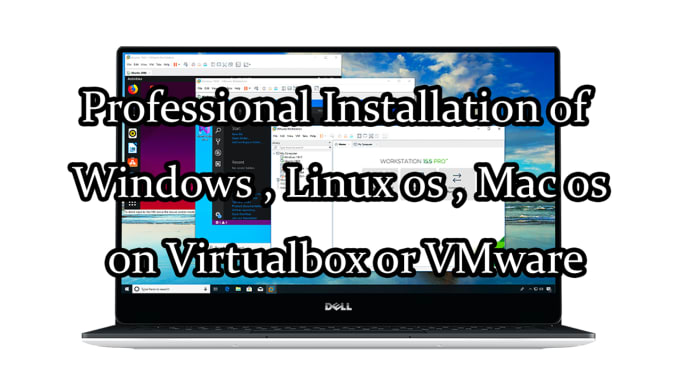

- #Virtualize mac os in virtualbox install
- #Virtualize mac os in virtualbox serial
- #Virtualize mac os in virtualbox upgrade
QEMU and KVM require additional configuration that is beyond the scope of the script. See the documentation command for further information. QEMU supports the VMDK virtual disk image storage format, which can be configured to be created by the script. QEMU with KVM is capable of providing virtual machine hardware passthrough for near-native performance. These virtualization and deployment applications require additional configuration that is beyond the scope of the script. Performance and deploymentĪfter successfully creating a working macOS virtual machine, consider importing it into more performant virtualization software, or packaging it for configuration management platforms for automated deployment.
#Virtualize mac os in virtualbox upgrade
Monterey may require attaching another volume to the virtual machine and selecting the volume as the installation target, otherwise the upgrade is prone to failing and entering a boot loop. The virtual machine may be upgraded to the latest macOS Big Sur (11) and macOS Monterey (12) versions through Software Update. Some CPU models released in 2020 and later may fail to start or complete the installer, and may require manually adjusting the CPUID settings. If the guest macOS boot process hangs on “LoadKernelFromStream”, “EndRandomSeed”, or "EXITBS", see the documentation command regarding VirtualBox CPU profiles and CPUID settings. MacOS guests on VirtualBox are incompatible with some CPU models. Some features may behave unexpectedly, such as USB device support, audio support, FileVault boot password prompt support, and other features. Unsupported featuresĭeveloping and maintaining VirtualBox or macOS features is beyond the scope of this script.

After the installation is complete, the storage size may be increased. The script by default assigns a target virtual disk storage size of 80GB, which is populated to about 25GB on the host on initial installation.

These can be set in EFI and NVRAM by editing the script.
#Virtualize mac os in virtualbox serial
ICloud, iMessage, and other connected Apple services require a valid device name and serial number, board ID and serial number, and other genuine (or genuine-like) Apple parameters. iCloud and iMessage connectivity and NVRAM The majority of the script is either documentation, comments, or actionable error messages, which should make the script straightforward to inspect and understand. Documentationĭocumentation can be viewed by executing the command. MacOS Catalina (10.15), Mojave (10.14), and High Sierra (10.13) currently supported. Should work on most modern Linux distros.
#Virtualize mac os in virtualbox install
Macos-guest-virtualbox.sh is a Bash script that creates a macOS virtual machine guest on VirtualBox with unmodified macOS installation files downloaded directly from Apple servers.Ī default install only requires the user to sit patiently and, less than ten times, press enter when prompted by the script, without interacting with the virtual machine. Push-button installer of macOS on VirtualBox


 0 kommentar(er)
0 kommentar(er)
